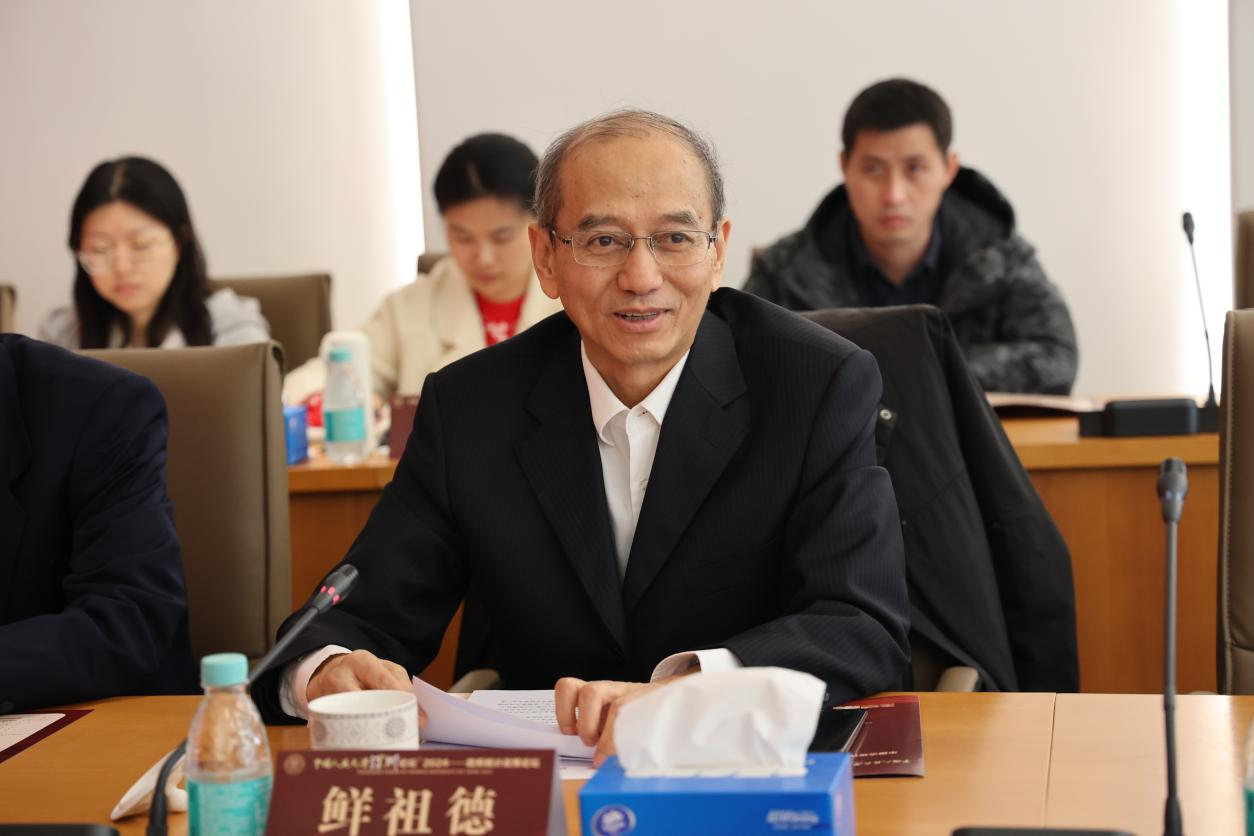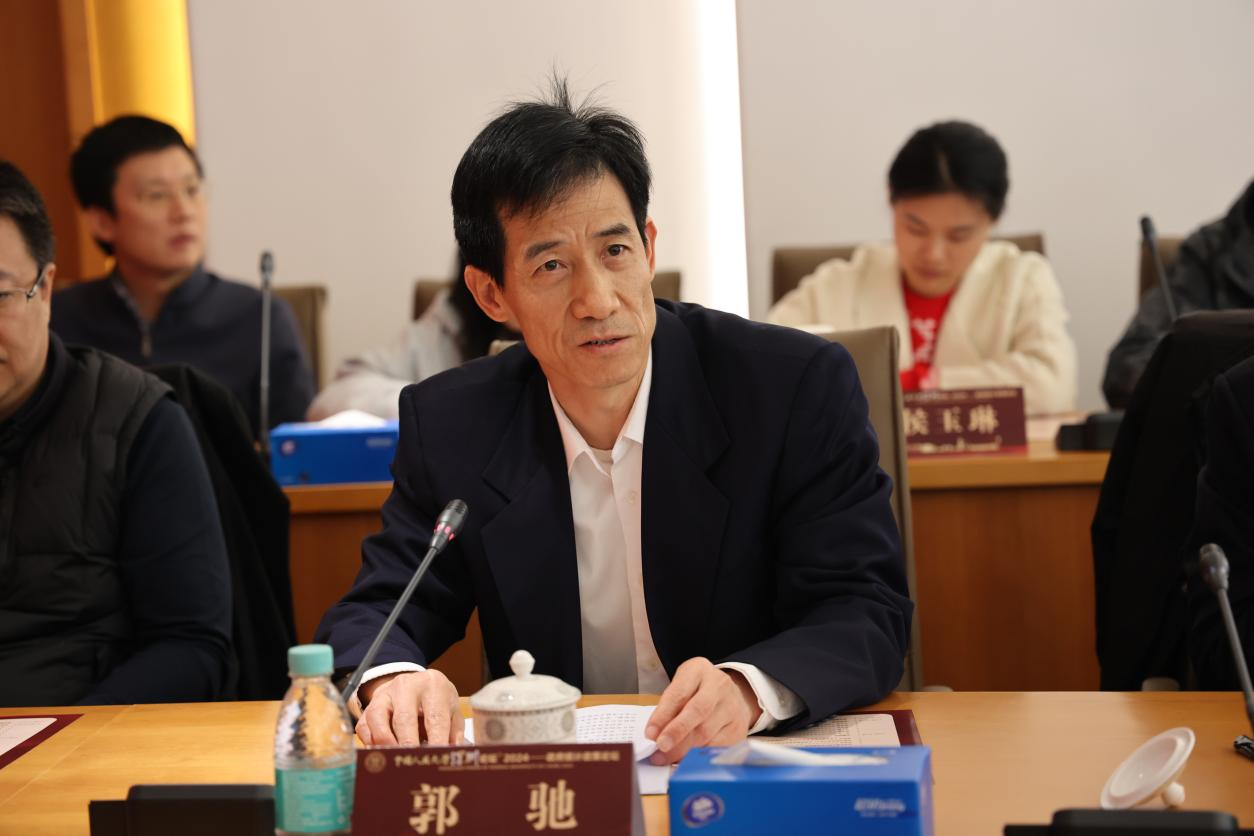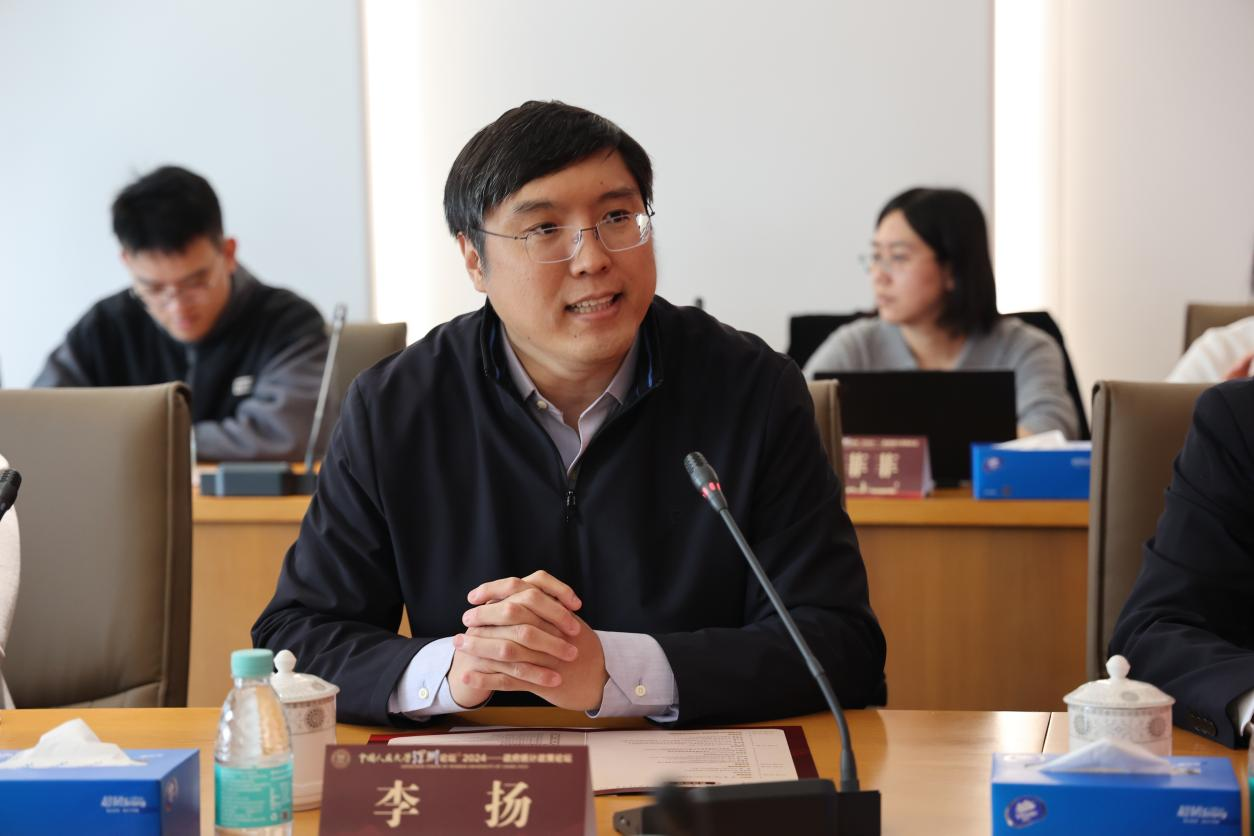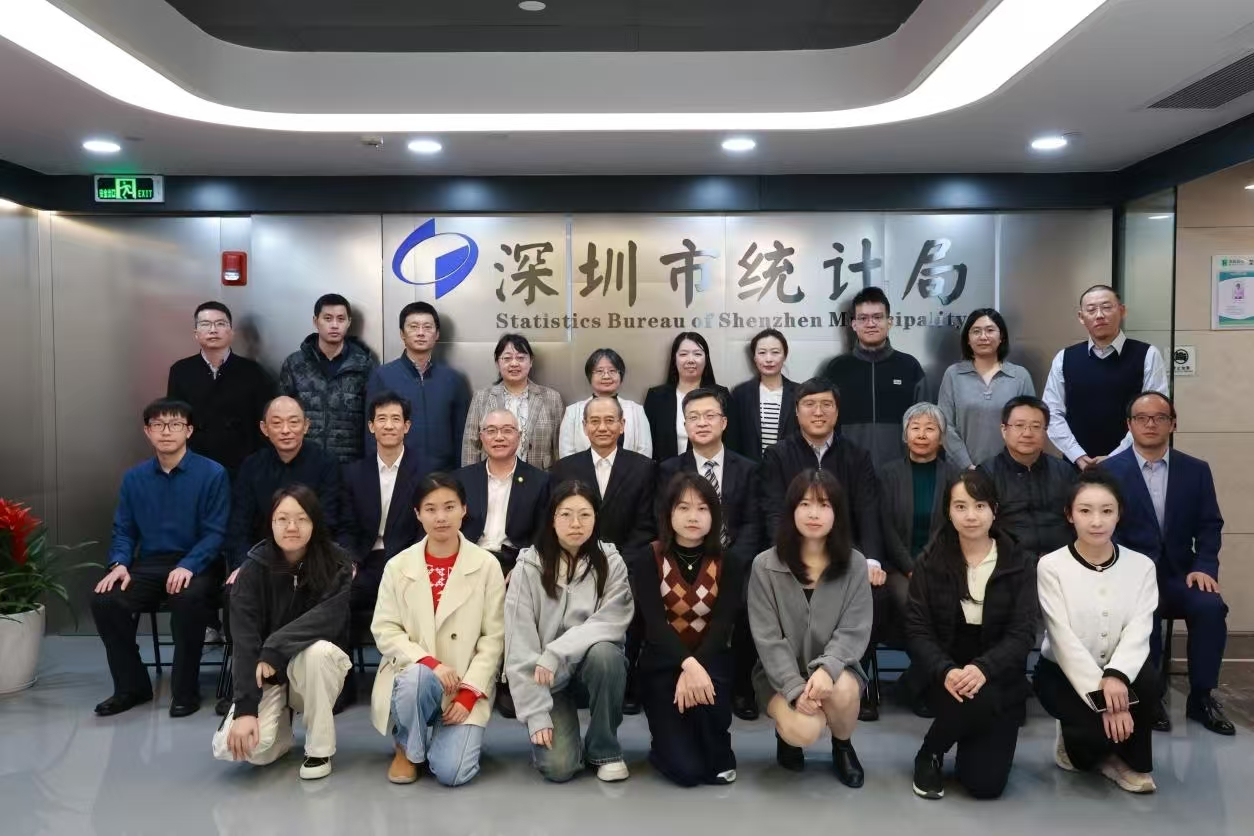Government Statistical Policy Forum Successfully Held
A government statistical policy forum, themed Statistical Measurement of Chinese-Style Modernization and Shenzhen’s Modern Statistical Practice, was successfully held on December 29. The forum was jointly hosted by the Government Statistics Modernization Research Center at the Renmin University Shenzhen Research Institute [Institute of Advanced Social Sciences (Shenzhen)] and the School of Statistics, Renmin University of China, with the Shenzhen Bureau of Statistics as a co-organizer.

Experts and scholars from the Guangdong Provincial Bureau of Statistics, the Shenzhen Bureau of Statistics, Guangzhou University, Shenzhen University, and Renmin University of China attended the event. Qinggele Tu, Vice Party Secretary of Renmin University of China; Xian Zude, State Council Advisor; and Guo Chi, Director of the Shenzhen Bureau of Statistics, delivered opening remarks. The meeting was chaired by Li Yang, Dean of the School of Statistics, Renmin University of China.

Qinggele Tu emphasized that in recent years, China’s sustained economic growth and significant social progress have made Chinese-style modernization a global focal point. Renmin University has actively responded to national development strategies, providing theoretical support and data security for Chinese-style modernization in the field of statistics. As a key discipline at the university, statistics has consistently ranked highly in educational assessments, demonstrating strong academic capabilities. The university’s in-depth research on statistical measurement indices for Chinese-style modernization reflects its strategic positioning in serving national strategies and supporting socioeconomic development. This is a significant step in advancing China’s modernization process. He noted that as a forefront city in reform and opening-up, Shenzhen’s economic and social achievements vividly illustrate the practical progress of Chinese-style modernization. Analyzing Shenzhen’s successful experiences not only provides valuable references for other regions but also offers practical insights for comprehensively advancing Chinese-style modernization.

Xian Zude highlighted that the theory of Chinese-style modernization, a major theoretical innovation of the 20th Party Congress and a significant achievement in scientific socialism, is rich in content. Advancing Chinese-style modernization requires adhering to general modernization principles while aligning with China’s specific realities. He stressed the importance of scientific theoretical support, precise data analysis, and forward-looking policy guidance in addressing this historic mission, particularly the unique and critical role of statistical work. While advancing institutional and methodological research, greater investment is needed in strengthening statistical capacity building, improving statistical discipline standards, and cultivating new statistical talent. In the digital era, statistics must continuously innovate, leveraging new technologies in data science to address unprecedented challenges in both theory and practice. Grounded efforts and proactive actions are essential to integrate statistics with data science more effectively, promoting deep fusion in these fields.

Guo Chi noted that Shenzhen, as a pioneer in reform and opening-up, has created countless "firsts" over the past four decades, exemplifying the brilliance of socialism with Chinese characteristics through innovation. In the great practice of deepening reforms and advancing Chinese-style modernization, Shenzhen’s statistical work has continually pursued innovation. This includes improving a statistical indicator system to support high-quality development, deepening characteristic indicator systems, conducting total factor productivity research, and constructing a statistical evaluation system adapted to China’s modernization. Recently, the Shenzhen municipal government signed a strategic cooperation framework agreement with the National Bureau of Statistics to advance statistical modernization reforms, planning to implement the agreement further to drive continuous innovation and development in Shenzhen’s statistical field.

Li Yang, Dean of the School of Statistics at
Renmin University of China, chaired the meeting
The forum featured three academic presentations, delving into topics related to Chinese-style modernization.
Li Jingping, Vice Dean of the School of Statistics, Renmin University of China; Zhen Feng, Director of the Department of Socioeconomic Statistics; and Wu Yilin, Director of the Government Statistics Modernization Research Center at the Shenzhen Research Institute, presented on the Compilation of Chinese-Style Modernization Indices and Measurement Analysis of Shenzhen’s Socioeconomic Modernization. The presentation focused on the methodology for compiling Chinese-style modernization indices and used these indices to measure Shenzhen’s socioeconomic modernization level. As a socialist modernization led by the Communist Party of China, Chinese-style modernization shares common features with global modernization while reflecting China-specific characteristics. By constructing a scientific and reasonable evaluation indicator system, the study comprehensively reflects all aspects of Chinese-style modernization. Shenzhen, as a frontier city in reform and opening-up, exhibits significant modernization traits in its socioeconomic development. The study selected key indicators of Shenzhen to analyze its socioeconomic development from 2020 to 2023 in detail.
Chen Yanqi, Director of the Comprehensive Department at the Shenzhen Bureau of Statistics, presented on Research on the Process of Chinese-Style Modernization in Shenzhen. The presentation centered on the theory of Chinese-style modernization, establishing a scientific statistical evaluation indicator system and conducting in-depth research on Shenzhen’s progress in advancing Chinese-style modernization since 2020. The theory of Chinese-style modernization, a major theoretical innovation, is deeply rooted in China’s historical context, social reality, and developmental needs, serving as a foundational and critical theoretical support for building a fully modernized socialist country.
Dr. Yang Xinhong, Vice President of the Chinese Statistical Society, Deputy Leader of the Economic Group in the Guangdong Provincial Government Advisory Office, former Party Secretary and Director of the Guangdong Provincial Bureau of Statistics, and a senior statistician, presented on Constructing a High-Quality Development Monitoring Indicator System for Guangdong in Alignment with Chinese-Style Modernization. Using Guangdong as a case study, the presentation explored the establishment of a "comprehensive classification evaluation indicator system for high-quality development" integrated with the process of Chinese-style modernization. The construction of Chinese-style modernization is inseparable from high-quality development, forming a coherent lineage. To identify actionable strategies, a set of evaluation indicators compatible with China’s modernization process is essential. As China’s largest provincial economy and a microcosm of its imbalanced development, Guangdong plays a demonstration role in advancing Chinese-style modernization and high-quality development.
Guo Chi, Director of the Shenzhen Bureau of Statistics; Li Meng, Vice Dean of the School of Economics, Shenzhen University; Li Zhenghui, Vice Dean of the School of Economics and Statistics, Guangzhou University; Tang Hui, Senior Researcher at the Bao’an District Artificial Intelligence Industry Office; Xian Zude, State Council Advisor; Xu Yipin, Deputy Secretary-General of the Chinese Statistical Society; and Professor Gao Minxue from the School of Statistics, Renmin University of China, participated in thematic discussions.
The forum’s guests and scholars provided diverse perspectives and profound insights, particularly on the construction of evaluation systems for Chinese-style modernization, the integration of regional characteristic indicators, and the fusion of multidimensional data sources and technologies. Valuable suggestions included combining local characteristic indicator systems to conduct multi-level and multi-dimensional comparative analyses across regions, countries, and time spans, as well as leveraging multimodal, multisource technological tools to enhance data integration and intelligent analysis, thereby improving the accuracy and scientific rigor of evaluations.


